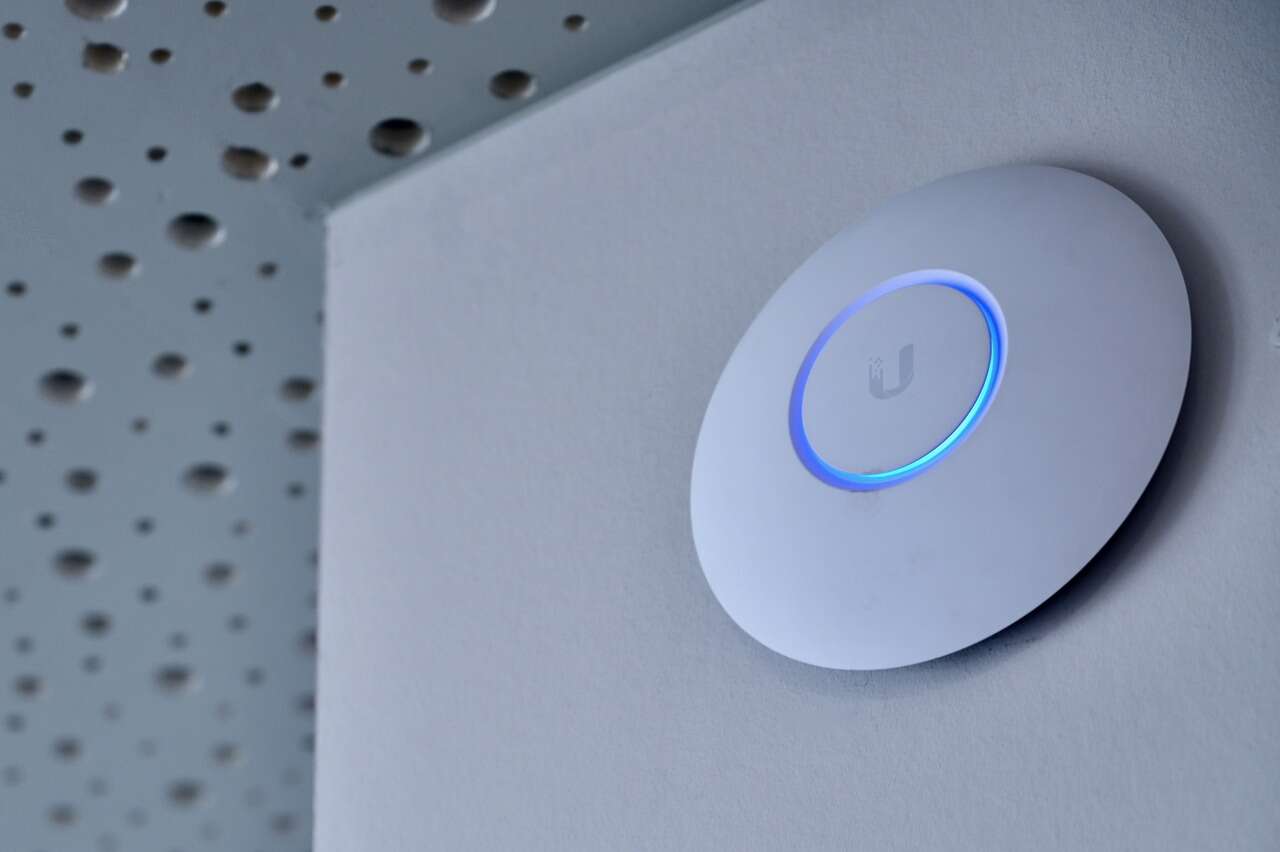Do you know where Wi-Fi comes from? The history of Wi-Fi dates back to the 1970s, with the development of Wireless Local Area Network (WLAN) technology. However, it was in 1997 that the IEEE (Institute of Electrical and Electronics Engineers) established the first Wi-Fi standard, 802.11, paving the way for the commercial adoption of Wi-Fi and subsequently, wireless connectivity networks.
Let’s review the evolution of the standard and ways to secure professional wireless networks.
What is Wi-Fi, and how does it work?
Wi-Fi, an acronym for Wireless Fidelity, enables wireless Internet connection using radio waves. Wi-Fi-enabled devices such as smartphones, computers, and printers communicate with a router or access point connected to the Internet.
This technology revolutionized how we access and share information, eliminating the need for physical cables, both on an individual level and within businesses.

From Wi-Fi b to Wi-Fi 7: Major Standard Evolutions
Wi-Fi has undergone several evolutions since its inception, each bringing significant improvements in terms of speed, range, and reliability.
- Wi-Fi b (802.11b): Launched in 1999, it offered speeds up to 11 Mbps, marking the beginning of widespread Wi-Fi adoption.
- Wi-Fi g (802.11g): Introduced in 2003, it quadrupled speeds to 54 Mbps, improving performance and range.
- Wi-Fi n (802.11n): Also known as Wi-Fi 4, launched in 2009, it introduced Multiple Input Multiple Output (MIMO) technology, significantly increasing speeds (theoretically 450 Mbps) and range.
- Wi-Fi ac (802.11ac): Or Wi-Fi 5, adopted in 2014, marked a turning point with gigabit speeds (866 Mbps), better channel management, and increased efficiency. It is currently the most widespread standard in businesses.
- Wi-Fi 6 (802.11ax): Launched in 2019, it brought major improvements in efficiency, capacity, and performance, thanks to technologies like Orthogonal Frequency Division Multiple Access (OFDMA) and Multi-User, Multiple Input, Multiple Output (MU-MIMO). Speeds were also increased to 1.2 Gbps.
- Wi-Fi 6E: An extension of Wi-Fi 6, Wi-Fi 6E utilizes the 6 GHz band to provide additional channels and reduce congestion, improving capacity and performance for demanding applications.
- Wi-Fi 7 (802.11be): Wi-Fi 7, gradually introduced, will revolutionize connectivity with even higher speeds, capacity, and efficiency. Once again, the 6 GHz band will play a central role. The goal is to support speeds matching the evolution of optical fiber from 1 to 10 Gbps.

Wi-Fi 6E and 7: (Future) New Standards in Business
Wi-Fi 6, which has been widespread since 2021, brought significant improvements in the efficiency of enterprise networks by significantly enhancing traffic management and reducing interference. The 6E standard is currently deploying, but Wi-Fi 7 is expected to become widespread in the coming years. What to expect?
Wi-Fi 6E: Extension in the 6 GHz Band
Wi-Fi 6E represents an extension of Wi-Fi 6, using the new 6 GHz frequency band to provide additional channels and reduce congestion. This innovation increases capacity, speed, and reliability, making Wi-Fi 6E particularly suitable for critical and data-intensive applications in business.
Wi-Fi 7: Preparing for the Future of Connectivity
Wi-Fi 7 promises to define the future of wireless connectivity with significant advances in speed, capacity, and efficiency. It is designed to support demanding applications such as augmented and virtual reality and real-time communications, offering innovative possibilities for businesses.
Among the notable features of the Wi-Fi 7 specification are:
- Four times higher data rates (with a theoretical rate of around 46 Gbps, compared to 9.6 Gbps for Wi-Fi 6) thanks to 4K-QAM technology, a channel width of 320 MHz, and up to 16 spatial streams.
- Increased speed, reduced latency, and greater reliability through Multi-Link Operation (MLO), allowing wireless devices to associate and exchange traffic on multiple bands (or multiple channels in the same band with dual 5 GHz radio).
- Improved spectral efficiency and interference mitigation through Multiple Resource Units (MRU).
- Efficient use of the channel and bandwidth through preamble puncturing.
Securing Wi-Fi in Business
Wi-Fi network security is crucial to protect a company’s sensitive data from unauthorized access and cyberattacks.
The password
First security? The good old Wi-Fi password. Over the years, security standards in this regard have evolved to ensure better protection.
- WPA (Wi-Fi Protected Access): Introduced as an improvement over the WEP (Wired Equivalent Privacy) security, the WPA standard offered better protection through the use of the Temporal Key Integrity Protocol (TKIP) for encryption. However, vulnerabilities were discovered over time, leading to the development of more secure standards.
- WPA2: Launched in 2004, WPA2 became the essential security standard for Wi-Fi networks, using the Advanced Encryption Standard (AES) encryption protocol for increased security. WPA2 requires all IEEE 802.11 certified devices to be compatible with AES.
- WPA3: Introduced in 2018, WPA3 brings significant security improvements, including increased protection against brute-force attacks on passwords and better data protection even when passwords are compromised. WPA3 also introduces individual data encryption, enhancing privacy on open networks.

Advanced Security Standards
Securing a company’s routers requires a multi-layered approach, combining advanced security standards with robust authentication methods to protect against external and internal threats. In addition to adopting the latest Wi-Fi security standard, companies can enhance their network security by implementing other complementary methods:
- The use of authentication systems established from digital certificates or two-factor authentication (2FA) to control network access.
- Implementation of Virtual Local Area Networks (VLANs) to separate different types of traffic and users.
- Implementation of Access Control Lists (ACLs) to manage devices authorized to connect to the network is also one of the recommended practices for securing Wi-Fi in business.




